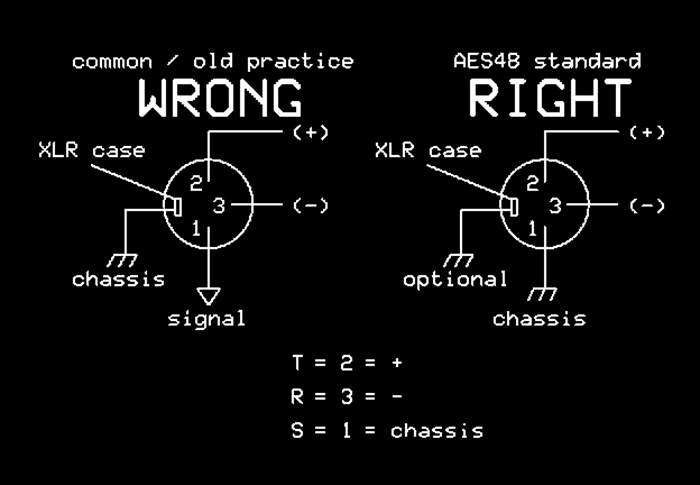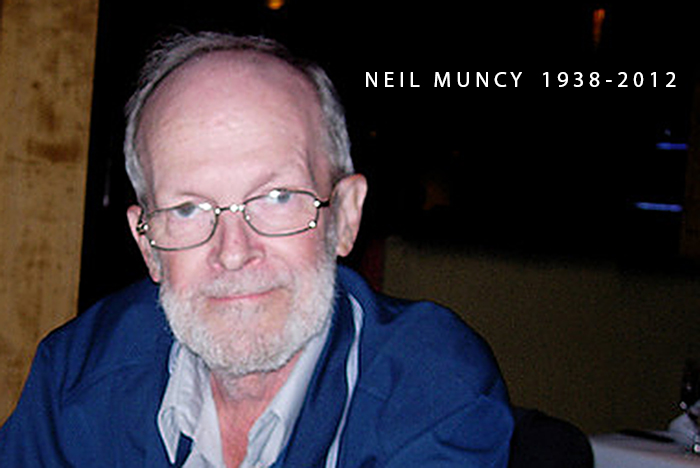Neil Muncy, Audio Engineer, 1938 – 2012
Audio engineer, Neil Muncy, passed away on Friday, August 10, 2012.
Neil certainly was an influential figure in the audio world and his work in the area of grounding, proper balancing and op-amp design formed the foundation of best practices in audio equipment design. He was an active member of the Audio Engineering Society and much of his work was journaled through that organization. His seminal paper “Noise Susceptibility in Analog and Digital Signal Processing Systems” was published in June of 1995 and it formed the basis of much discussion in establishing audio design standards. The paper coined what is now popularly known as “the Pin 1 problem”.

Neil’s accomplishments are quite substantial. Here is an excerpt from www.recordist.com listing some of Neil’s activities over his career:
Neil Muncy studied Electrical Engineering at the George Washington University and the Capitol Radio Engineering Institute in Washington, D.C. He began his professional career in 1959 as a member of the technical staff of the Johns Hopkins University Applied Physics Laboratory in the areas of low-level analog instrumentation, radar, and other related communications research projects. In 1966, after further studies in Physics & Business Administration at the American University, he founded SSI, Inc., a company which pioneered in the application of operational amplifier technology in large custom-built multichannel recording consoles, real-time and high speed tape recording and duplicating systems, and related equipment.
Neil Muncy Associates currently specializes in the design of recording and broadcast facilities, the development of solutions to acoustical and technical problems including particular expertise in the elimination of grounding, EMI and RFI problems in completed installations, and the presentation of papers, lectures and training seminars on audio-related topics.
From 1968 to 1986, Mr. Muncy was a guest instructor at the Eastman School of Music in Rochester, NY, participating each summer in the Eastman Recording Institutes, one of the very first college-level courses in Recording Technology. From 1980 to 1989, he also served as one of the principal instructors in the Music Recording Workshop Program sponsored by National Public Radio, in Washington D.C. Recent seminar clients include the Harris Institute for the Arts in Toronto, The Fanshawe College Music Industry Arts Program in London, Ontario, and the Recording Program at The State University of New York at Fredonia.
Mr. Muncy has contributed to a number of U.S. and International patents, holds a TEF licence from the California Research Institute Foundation, and was a contributor to the development of the Reflection Free Zone (RFZ) control room design concept. He has authored articles and papers on various audio topics, and earned credits on several Direct-to-Disc, live Jazz, and classical albums. Professional affiliations include the Acoustical Society of America, the Audio Engineering Society (AES), The Canadian Acoustical Association, and the Society of Motion Picture and Television Engineers.
Mr. Muncy has served as Chair of the Washington, D.C. & Toronto AES sections, Facilities Chair of the AES International Conference on Digital Audio in Toronto, and Co-Chair of AES-Toronto’s Audio Overview-II. He created the position of Membership Secretary of the Toronto AES section, and is the Vice-Chair of the AES Standards Committee SC-05-05 Working group on grounding and EMC practices. In 1997, Mr. Muncy was elected to the position of AES Eastern Vice President.
Projects included the Reverberation & Sound Enhancement System for the restoration of the Elgin Theatre in Toronto; the Sound Recording Studio for the Ford Centre for the Performing Arts in North York, Ontario; the analog disc mastering installation for Acoustic Sounds and Record Technology Inc., Camarillo, CA; design and development of the Reverberation/Acoustics Project (RAP) Studio for the University of Western Ontario Department of Applied Music & Performance, & the design of the largest-to-date Multichannel Sound Enhancement System for Toronto’s Hummingbird Centre for the Performing Arts. Other projects include the yearly position of Consulting Sound Designer for the Toronto International Film Festival, and an ongoing survey of off-air vs. off-cable television audio, with the goal of developing improvements at all points along the TV audio distribution chain, and research into the evolution of audio wiring & installation practices since the dawn of the Telephone industry a century ago.
A colleague, as well as longtime AES associate Earl McCluskie, and I were in the process of organizing a video reel documenting Neil’s accomplishments through the, soon to be, Toronto AES “Audio Masters Series”. With Neil’s failing health this project unfortunately never came to be. I am confident there will be further discussion to bring about some form of documentary of Neil’s life and work through the Toronto AES organization in the future.
In the meantime there will be a public tribute for Neil and you can find more information about that through this site or through the Toronto AES website.


1 Comment
admin
July 1, 2013Hi, the blog is based on a WordPress CMS. Thanks for the comment.
best, rob